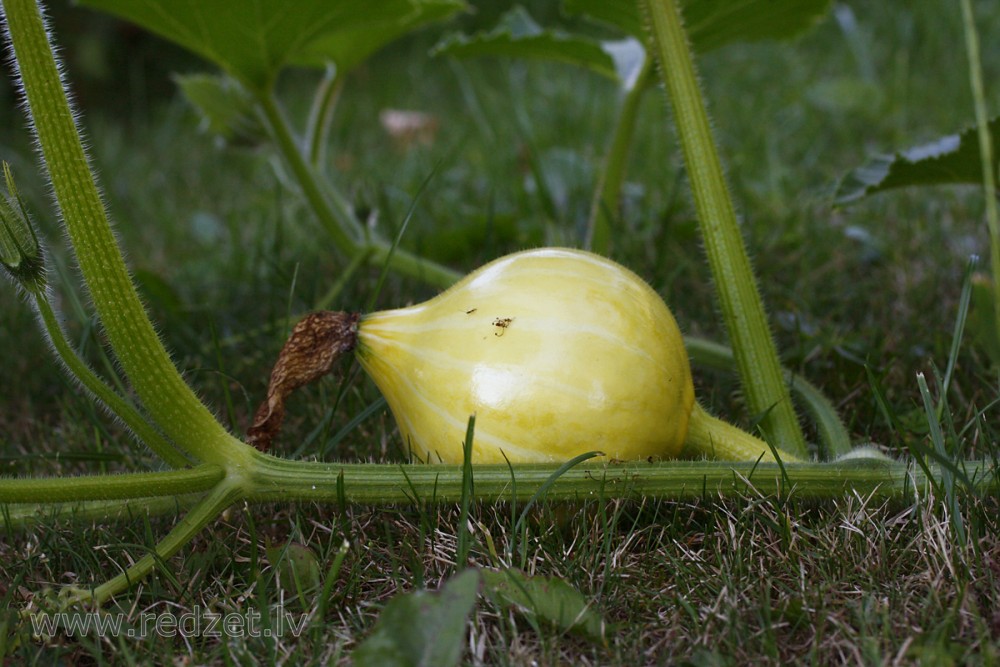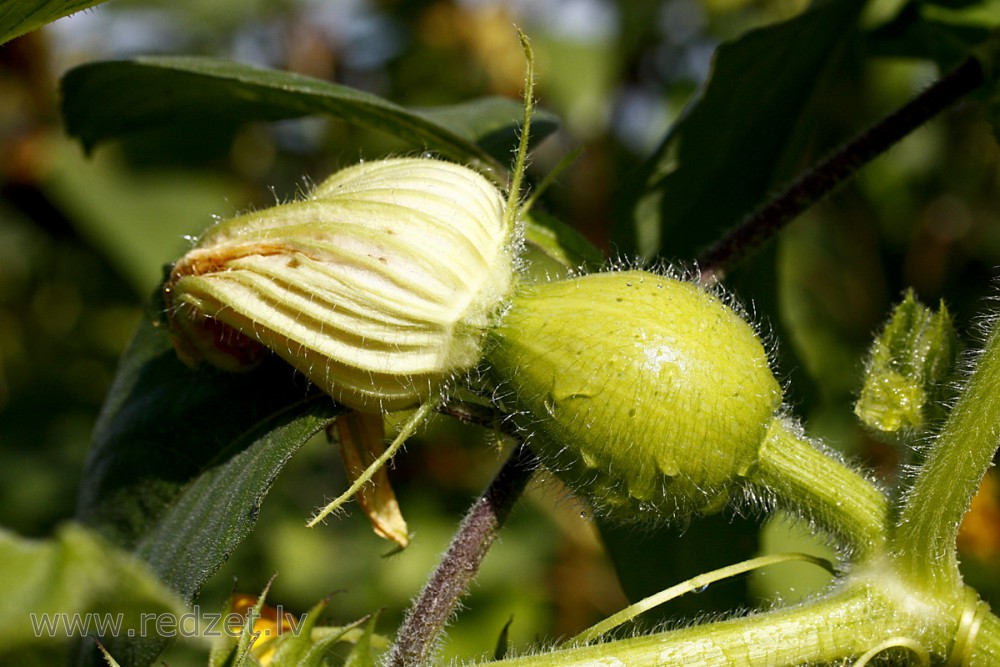Pumpkin
A pumpkin is a cultivar of a squash plant, most commonly of Cucurbita pepo, that is round, with smooth, slightly ribbed skin, and deep yellow to orange coloration. The thick shell contains the seeds and pulp. Some exceptionally large cultivars of squashwith similar appearance have also been derived from Cucurbita maxima.
Specific cultivars of winter squash derived from other species, including C. argyrosperma, and C. moschata, are also sometimes called "pumpkin".
In New Zealand and Australian English, the term pumpkin generally refers to the broader category called winter squash elsewhere.
Native to North America,pumpkins are widely grown for commercial use and are used both in food and recreation. Pumpkin pie, for instance, is a traditional part of Thanksgiving meals in Canada and the United States.
Description
Pumpkins, like other squash, are thought to have originated in North America. The oldest evidence, pumpkin-related seeds dating between 7000 and 5500 BC, was found in Mexico.
Since some squash share the same botanical classifications as pumpkins, the names are frequently used interchangeably. One often-used botanical classification relies on the characteristics of the stems: pumpkin stems are more rigid, prickly, and angular (with an approximate five-degree angle) than squash stems, which are generally softer, more rounded, and more flared where joined to the fruit. Pumpkin fruits are a type of botanical berry known as a pepo.
The color of pumpkins derives from orange carotenoid pigments, including beta-cryptoxanthin, alpha and beta carotene, all of which are provitamin A compounds converted to vitamin A in the body.
Taxonomy
All pumpkins are winter squash: mature fruit of certain species in the genus Cucurbita. Characteristics commonly used to define "pumpkin" include smooth and slightly ribbed skin, and deep yellow to orange color. Circa 2005, white pumpkins had become increasingly popular in the United States.Other colors, including dark green (as with some oilseed pumpkins), also exist.
Cultivation
Pumpkins are grown all around the world for a variety of reasons ranging from agricultural purposes (such as animal feed) to commercial and ornamental sales. Of the seven continents, only Antarctica is unable to produce pumpkins; the biggest international producers of pumpkins include the United States, Canada, Mexico, India, and China. The traditional American pumpkin used for jack-o-lanterns is the Connecticut Field variety.
en.wikipedia.org
https://en.wikipedia.org/wiki/Pumpkin
Continue reading



















